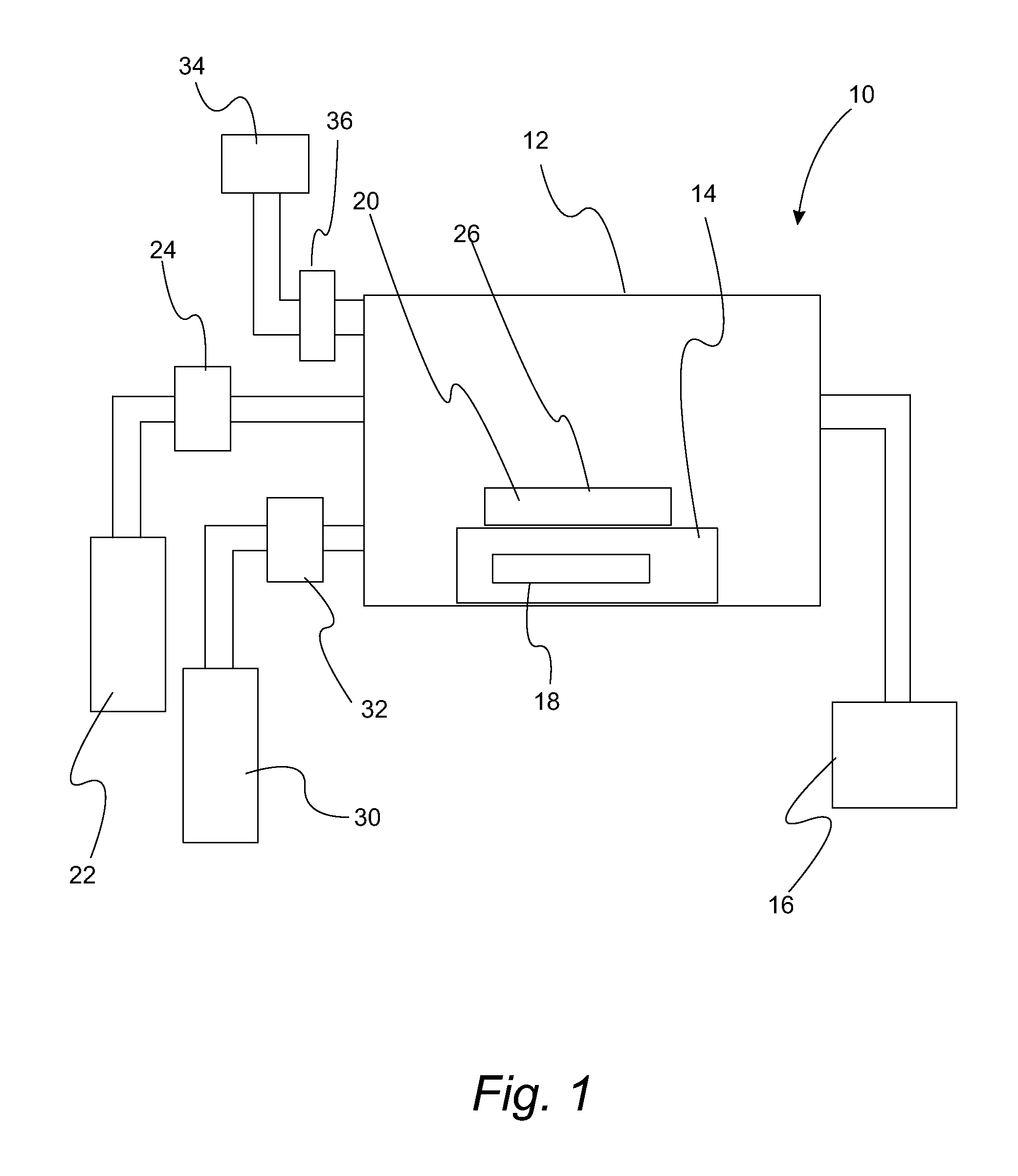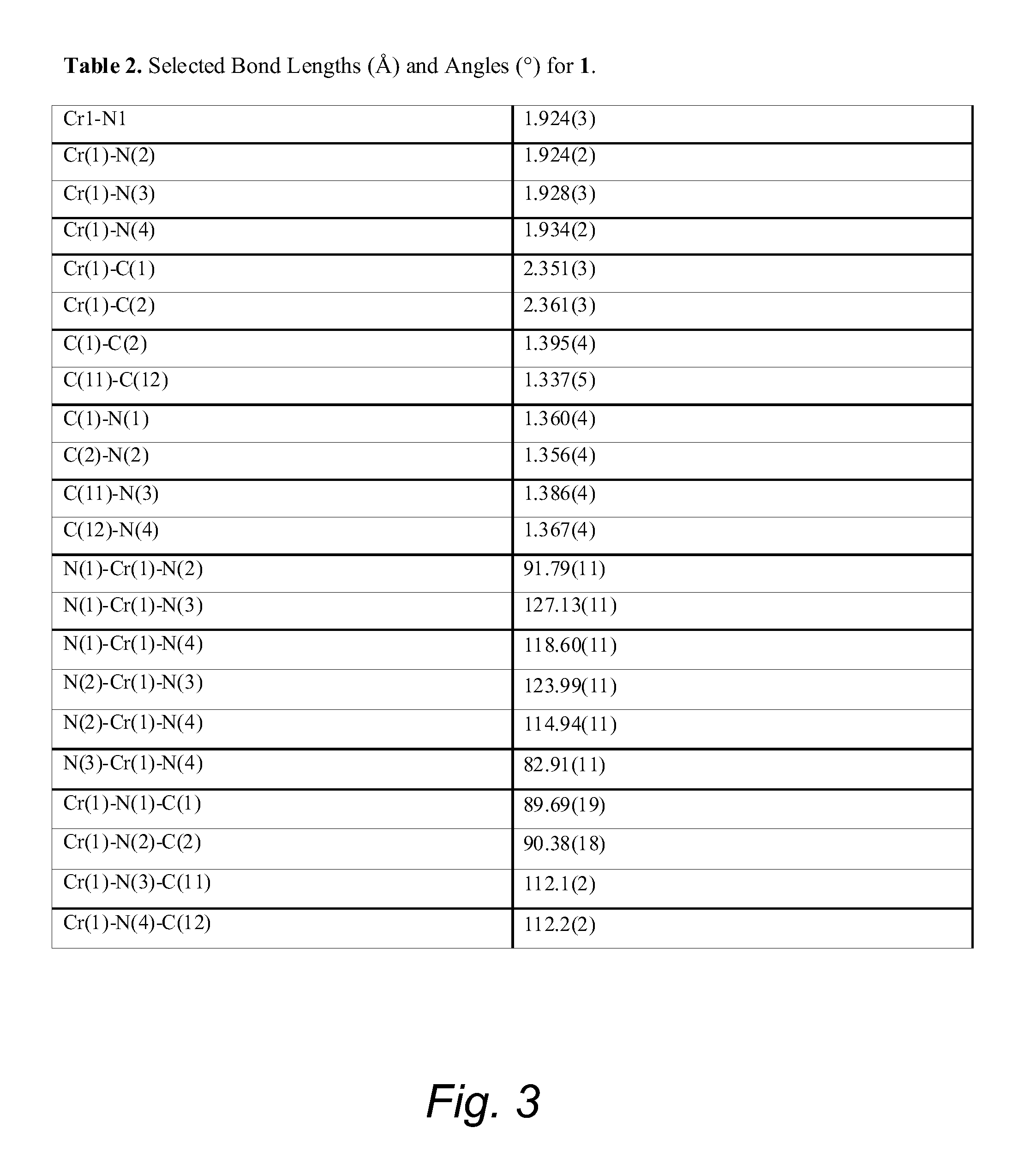Thermally stable volatile precursors
a volatile precursor and thermal stability technology, applied in the field of thermal stability volatile compounds, can solve the problems of limited number of chemical precursors with the requisite thermal stability, reactivity, and vapor pressur
- Summary
- Abstract
- Description
- Claims
- Application Information
AI Technical Summary
Benefits of technology
Problems solved by technology
Method used
Image
Examples
example 1
[0119]The activating compound is a coreagent where the resulting thin film would be a metallic. For example, reacting complexes 1-5 with diethylsilane induces reduction of the transition metal to produce a metal film. In addition, metallic film formation occurs by reducing metal nitride films under inert / reducing atmospheres at elevated temperatures. For example, Ni3N is reduced to nickel metal when heated above 180° C. under a H2 atmosphere. Additionally, when complexes 1-5 are reacted with formic acid upon a catalytically active ruthenium substrate, catalytic decomposition of the metal formate to the respective metal occurs.
example 2
[0120]The activating compound is a nitrogen-based coreagent where the resulting thin film would be a transition metal nitride. Useful sources of nitrogen-based coreagents include ammonia, hydrazine, dimethylhydrazine, and plasma-activated versions thereof. When complexes 1-5 are reacted with dimethyl hydrazine, metal nitride films will be formed. Ammonia and other nitrogen sources will produce nitrides as well.
example 3
[0121]The activating compound is an oxidizing agent resulting in the formation of a metal oxide thin film. Given their high reactivity toward ambient dioxygen and water, 1-5 will decompose to the respective metal oxides. Therefore, combining this practice to film growth using a combination of 1-5 and an oxygen source such as oxygen or ozone, a metal oxide film will be produced.
PUM
| Property | Measurement | Unit |
|---|---|---|
| thickness | aaaaa | aaaaa |
| sizes | aaaaa | aaaaa |
| sizes | aaaaa | aaaaa |
Abstract
Description
Claims
Application Information
 Login to View More
Login to View More - R&D
- Intellectual Property
- Life Sciences
- Materials
- Tech Scout
- Unparalleled Data Quality
- Higher Quality Content
- 60% Fewer Hallucinations
Browse by: Latest US Patents, China's latest patents, Technical Efficacy Thesaurus, Application Domain, Technology Topic, Popular Technical Reports.
© 2025 PatSnap. All rights reserved.Legal|Privacy policy|Modern Slavery Act Transparency Statement|Sitemap|About US| Contact US: help@patsnap.com



